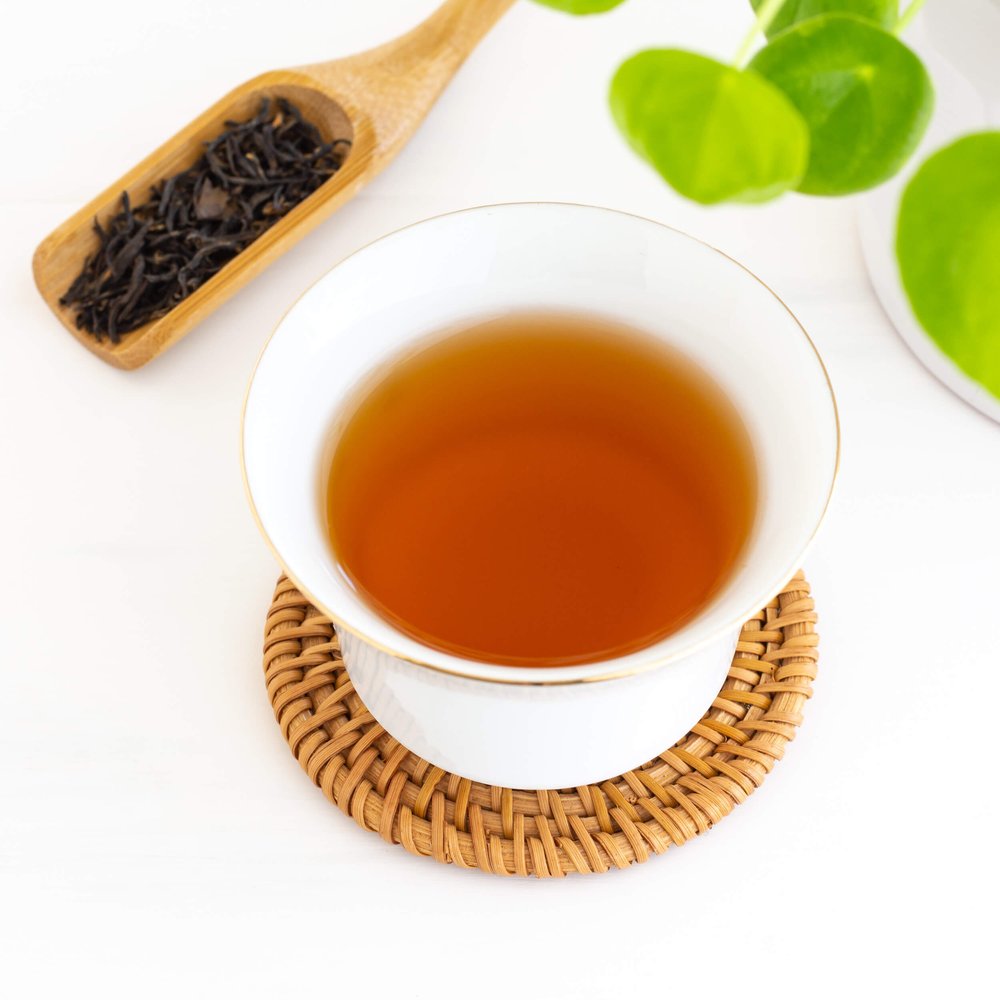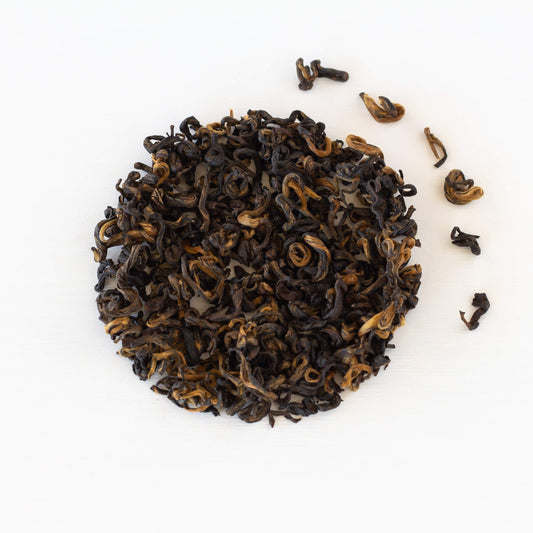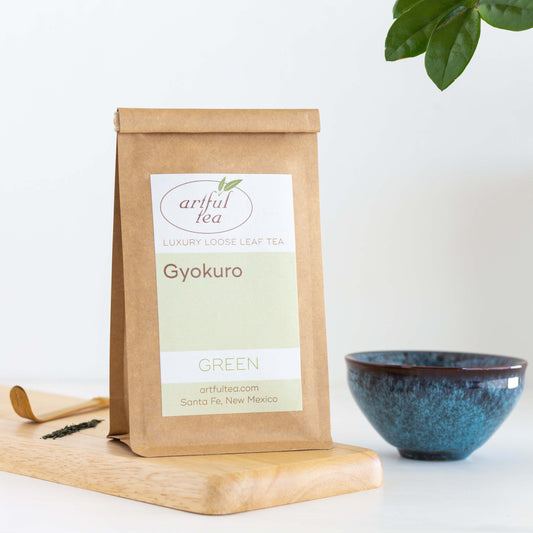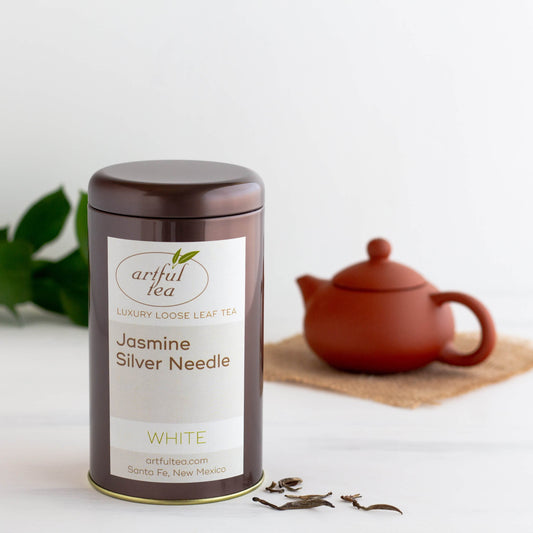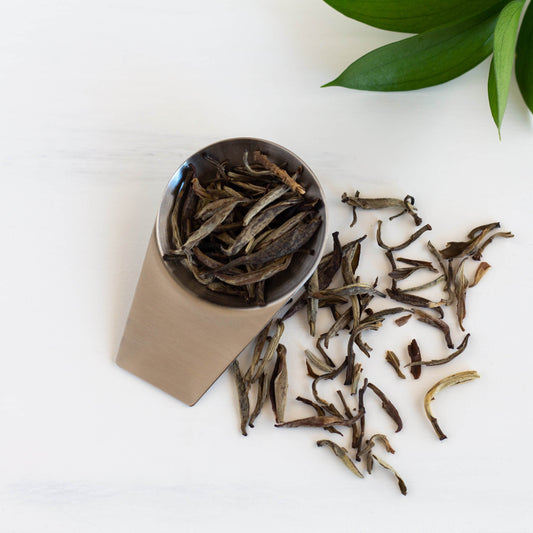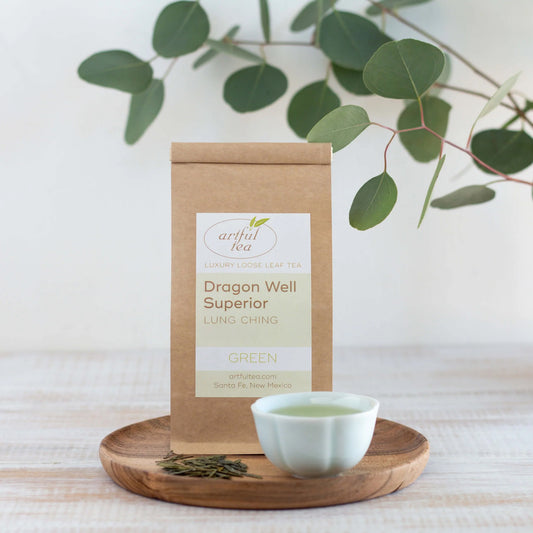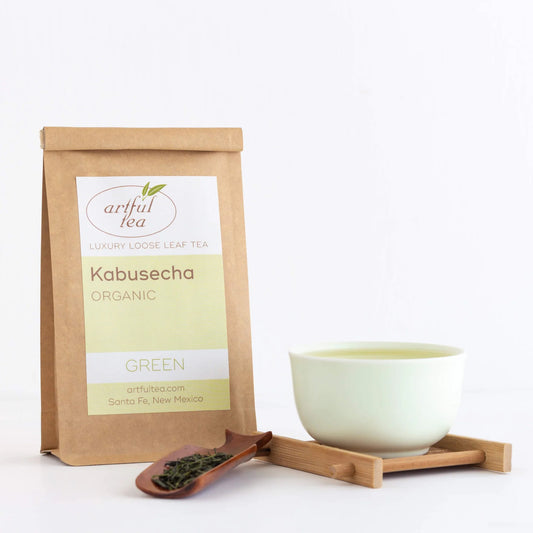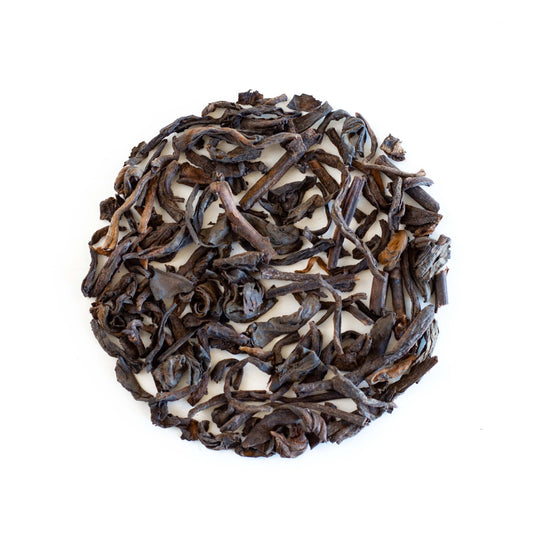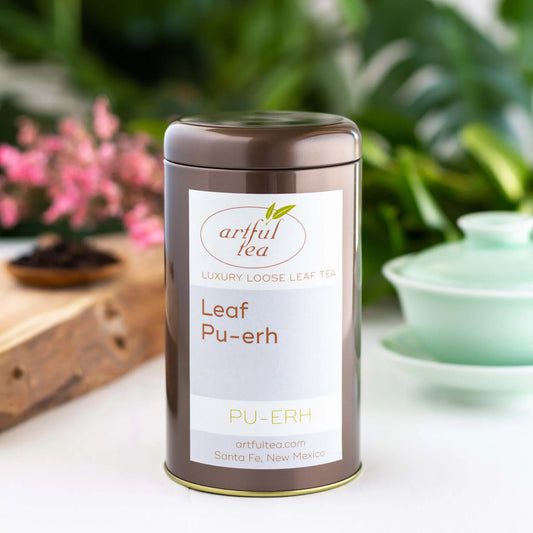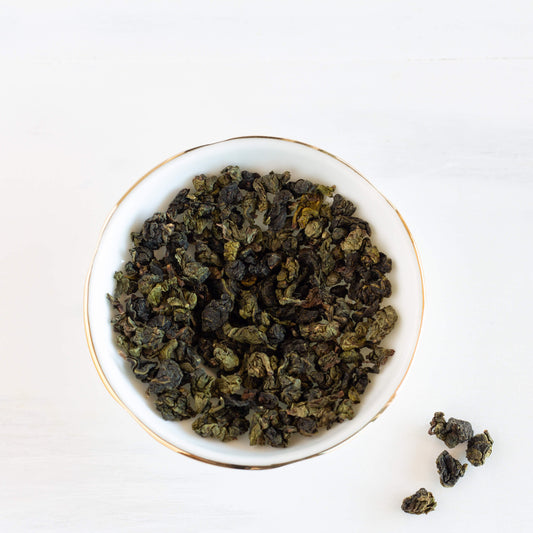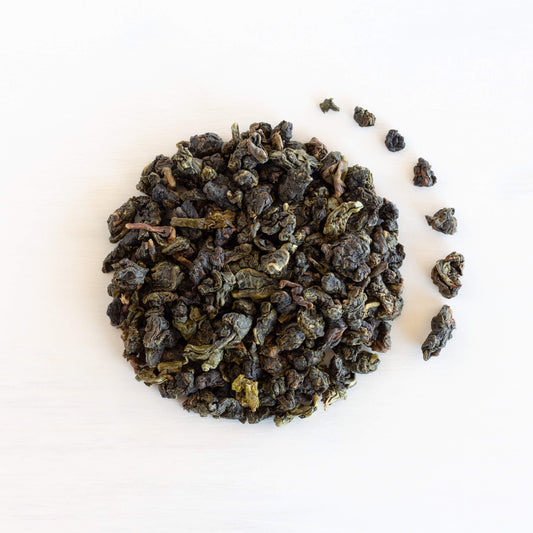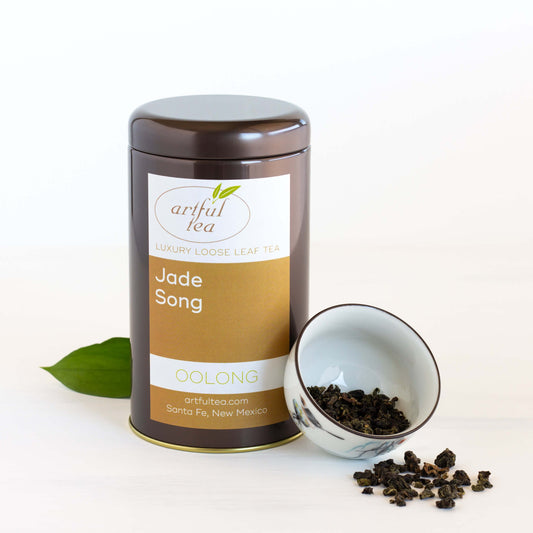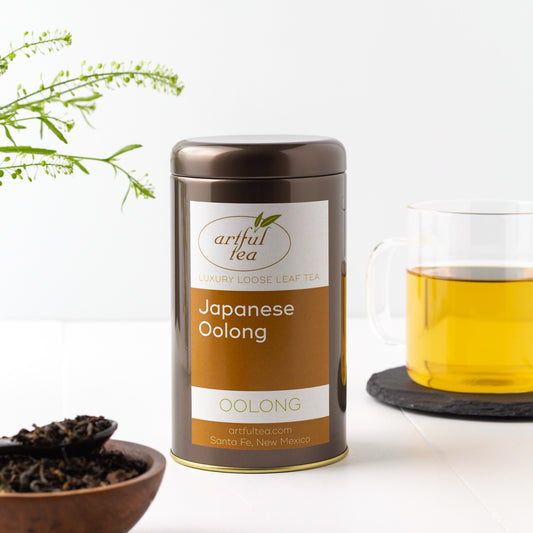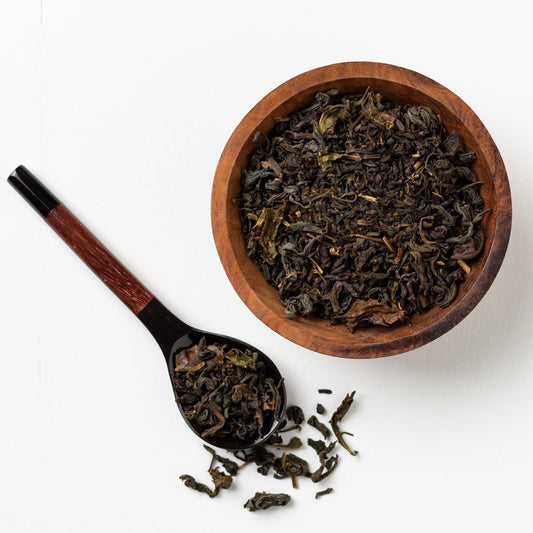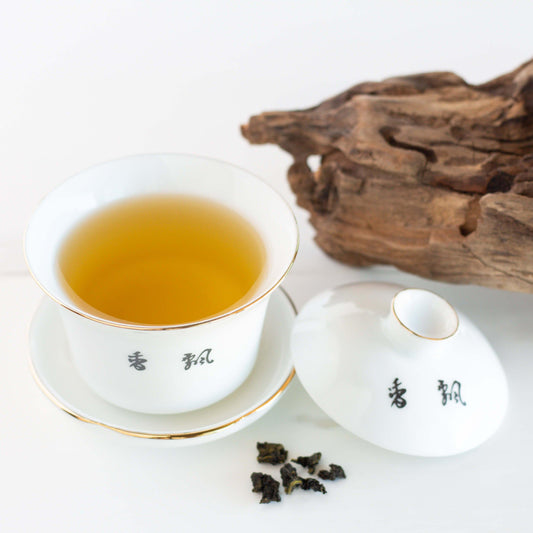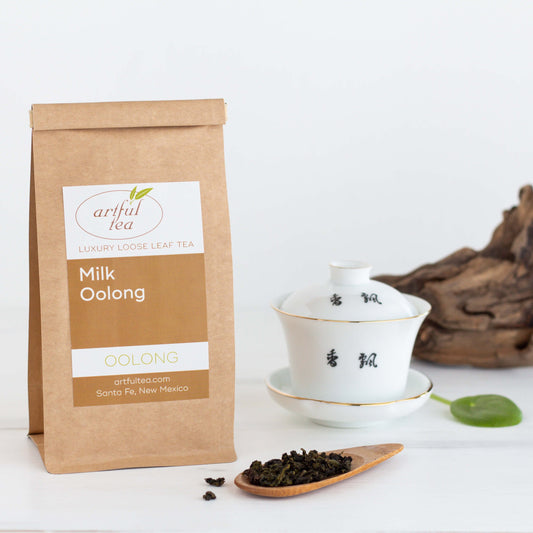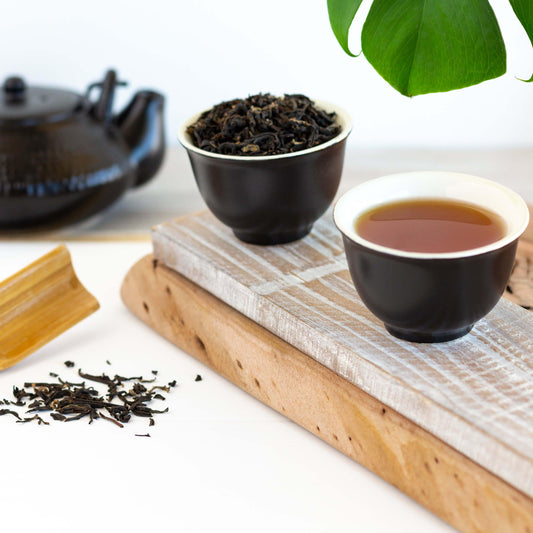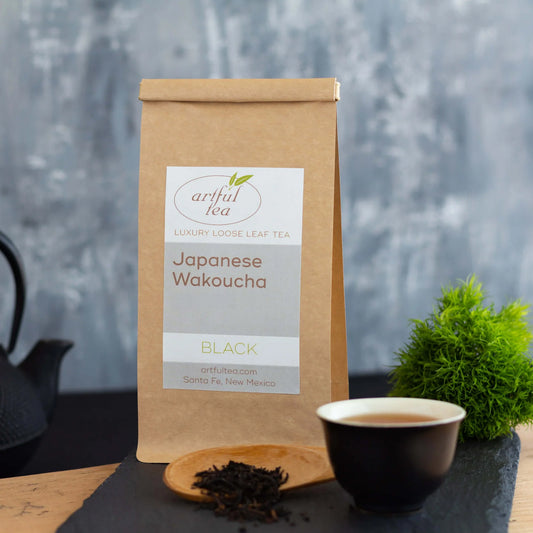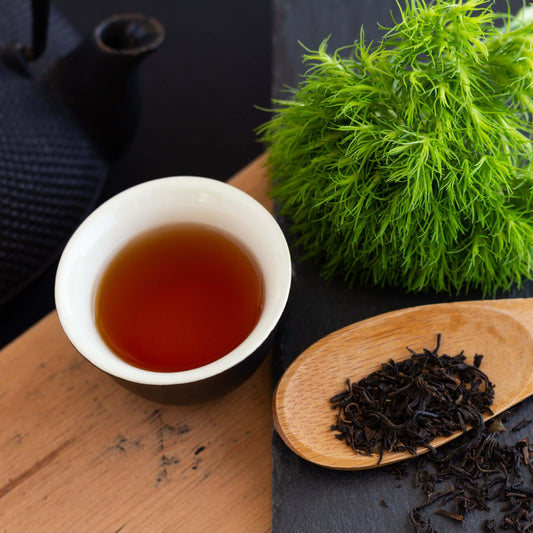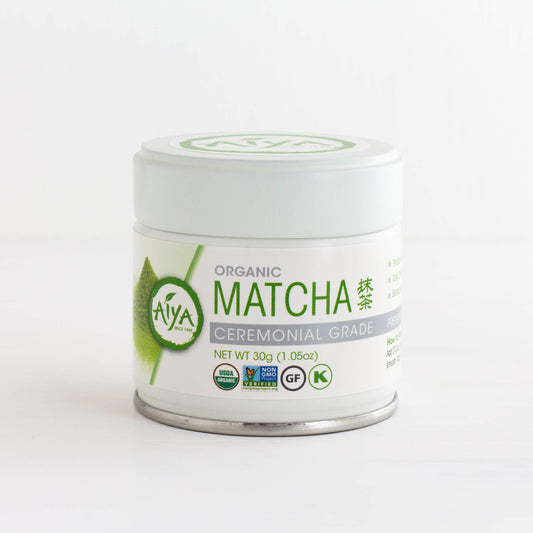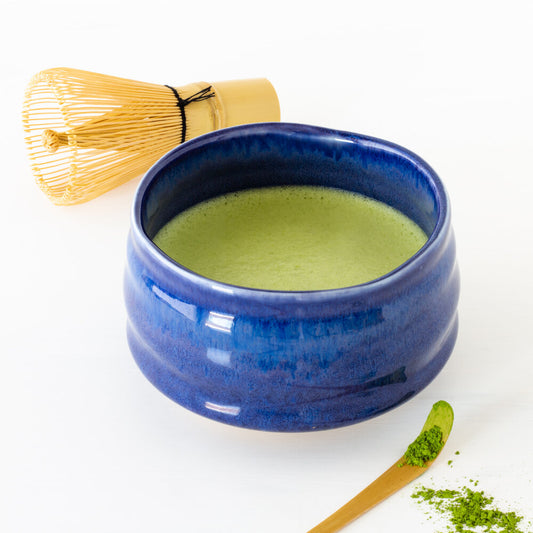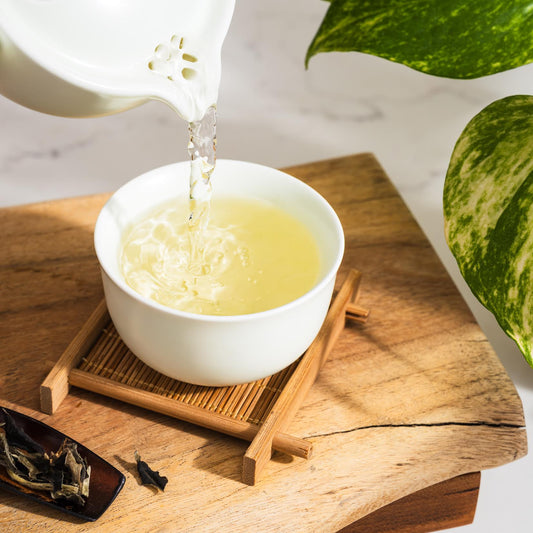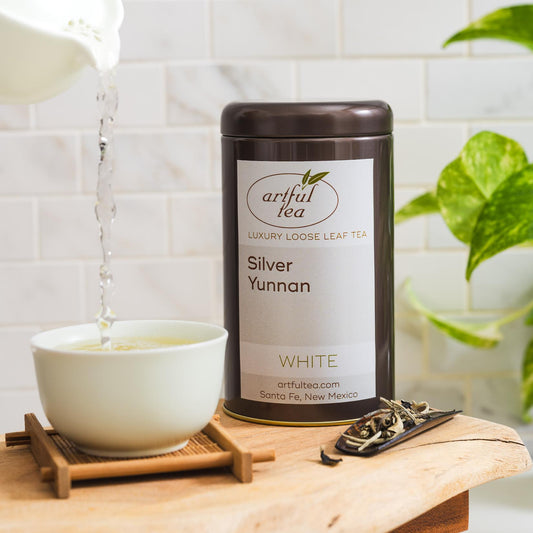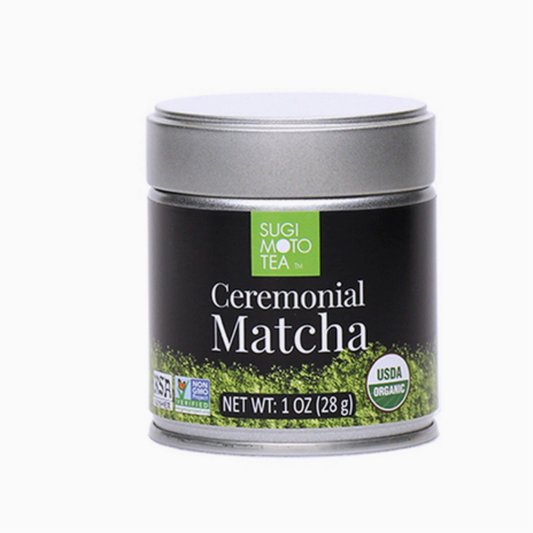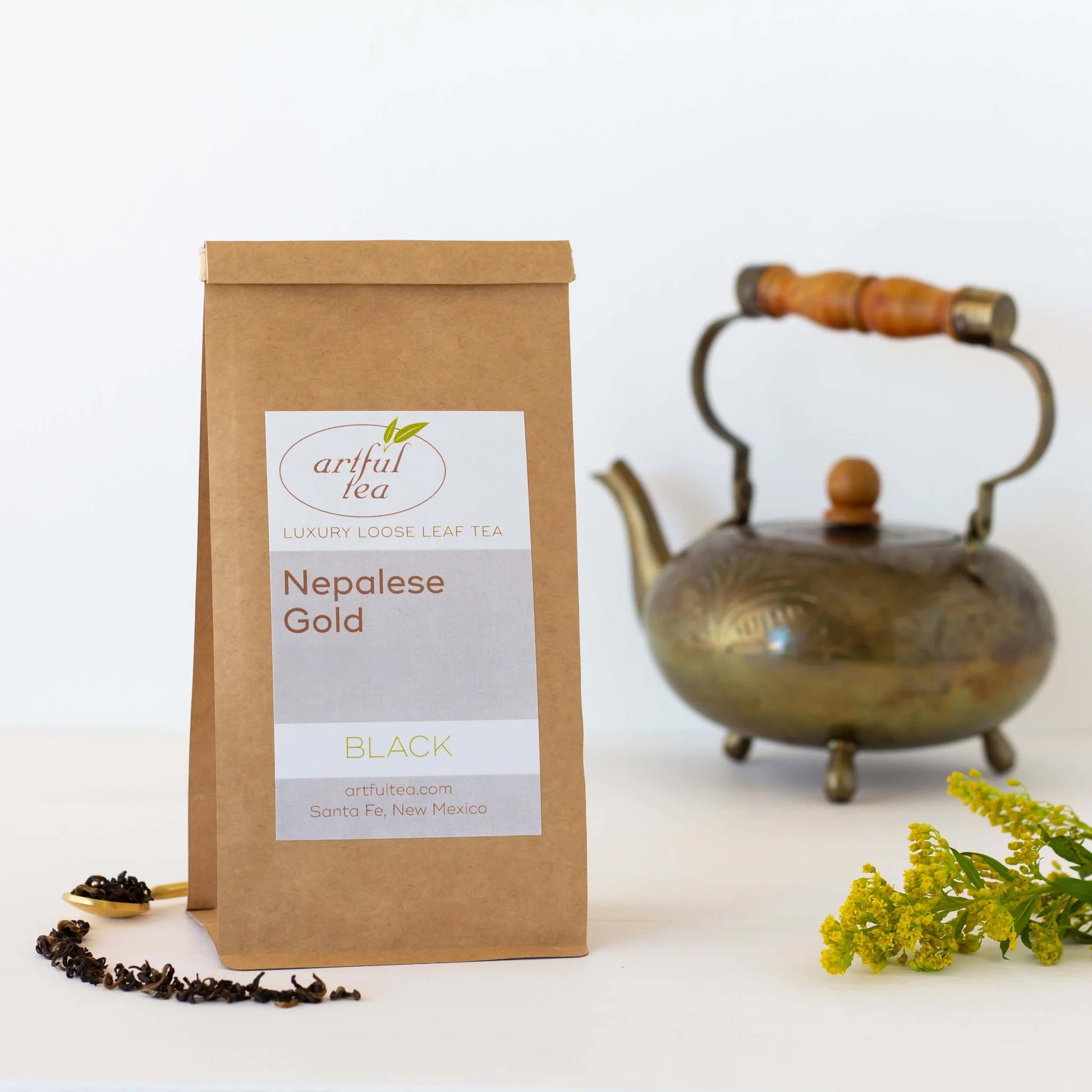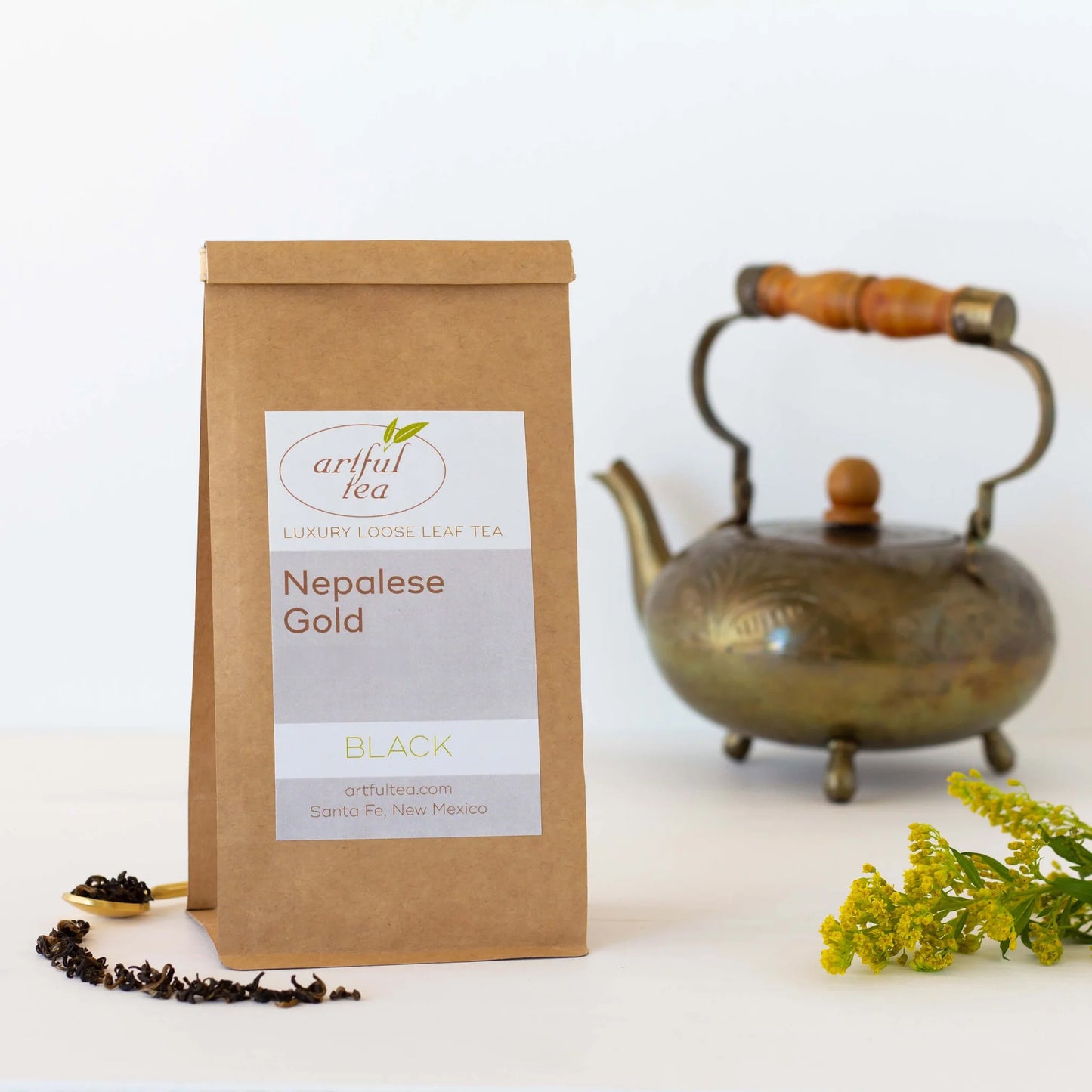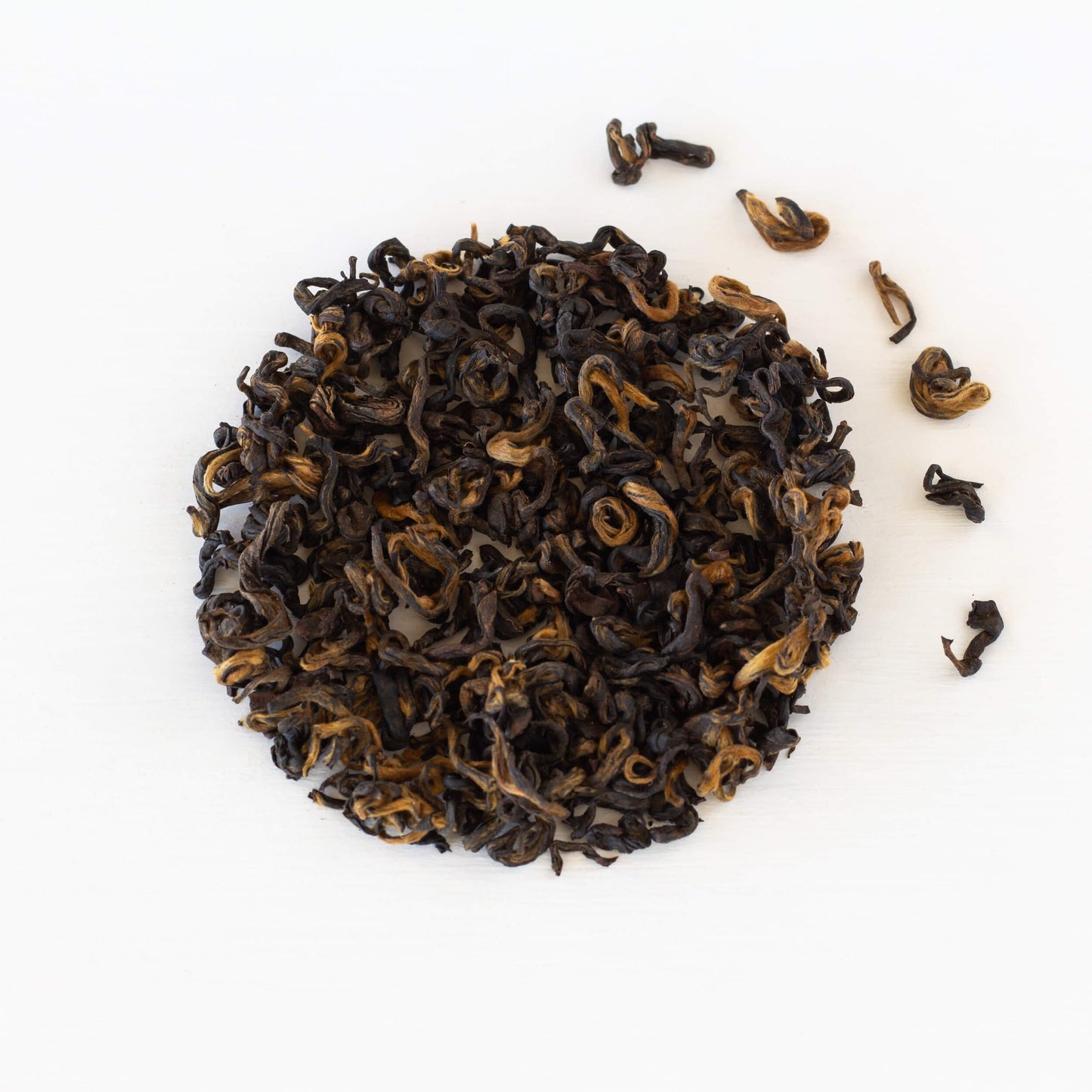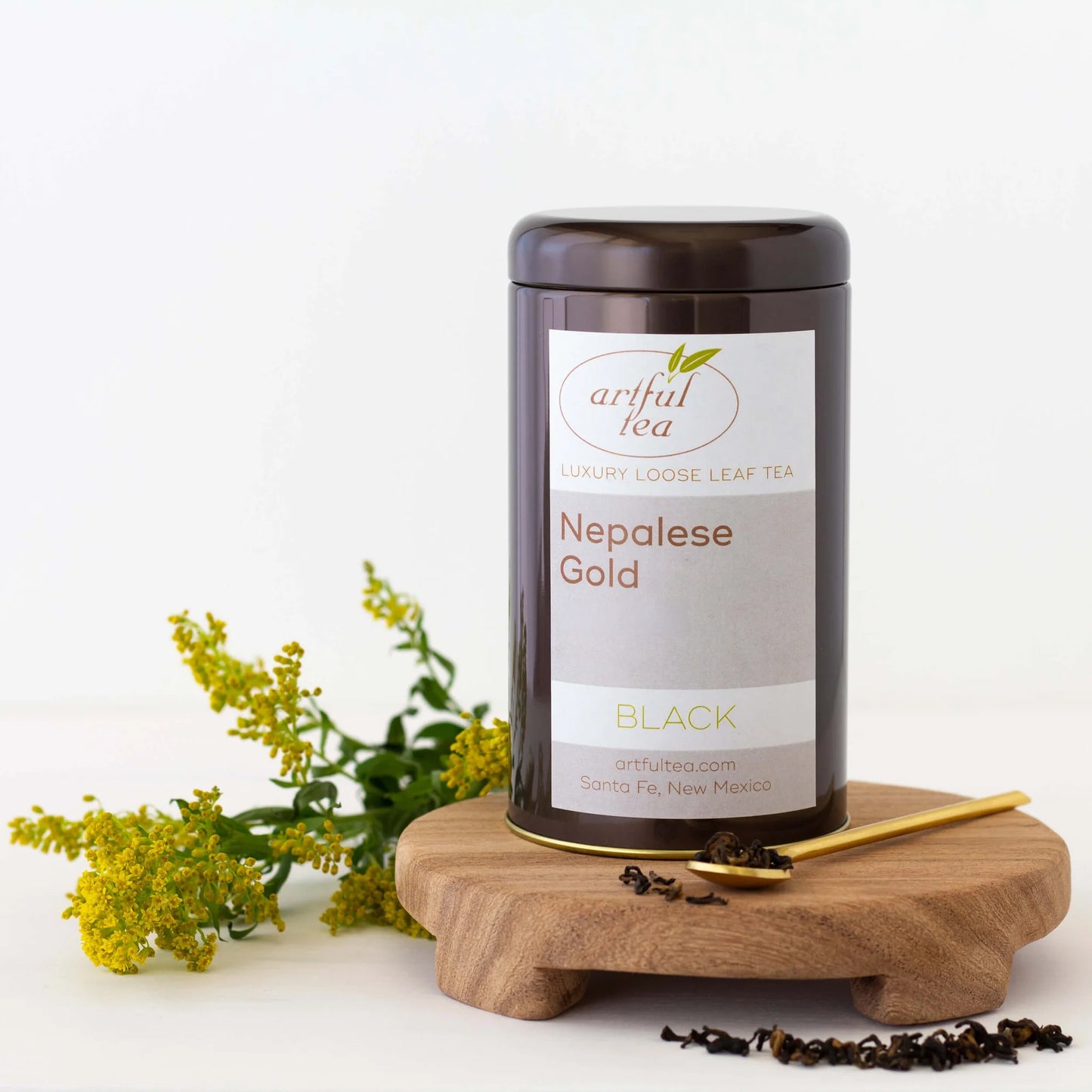What makes a premium loose leaf tea?
Premium loose leaf teas are defined by their high quality, which is determined by factors including leaf size and appearance, growing practices, and harvesting methods. While all loose leaf tea tends to be “premium” quality when compared to commercial tea bags, certain teas are of even more exceptional quality than the average loose leaf tea.
Leaf size and appearance
Looking closely at tea leaves is one of the best ways to judge whether or not a tea is of exceptional quality. While premium tea leaves look different depending on the type of tea, they share a few similar characteristics. One thing to look for when inspecting premium teas is the size of the leaf. Is the tea leaf broken into smaller bits and pieces, or is it composed of single leaves dried, curled, or twisted into different shapes? Many high quality teas are made from whole, unbroken tea leaves.
Color and texture can also often be an indicator of high quality. For example, high quality black teas often have gold tips, and Indian black teas are graded according to an “orange pekoe” grading scale, where Tippy Golden Flowery Broken Orange Pekoe is the highest grade (flowery, golden, and tippy all indicate the presence of gold tips or buds.) White teas may have fine silver down on the tea leaves, an indicator that these are the first buds and tips of the tea plant. High quality green teas, especially shade-grown teas, are often an especially vibrant green, thanks to the increased presence of chlorophyl in the leaves.
Growing and harvesting methods
Many premium teas are also produced using specialized growing and harvesting methods. For instance, first flush Darjeeling teas are harvested in early spring from the first leaves of the tea plant. Similarly, premium white teas are often composed of the very first buds of the tea plant early in the spring season. Specialty green teas like Gyokuro, Kabusecha, and the tea leaves used to make matcha are typically shade grown for three to four weeks before harvest, which results in dark green tea leaves with a rich umami flavor and high caffeine content.
Tea type
Some types of tea, like black tea or green tea, are relatively common. While there are certainly premium varieties of black and green tea, there are also more everyday varieties that you can find at most tea shops or even your grocery store. In contrast, part of what makes some teas more special or desirable is simply the fact that they’re less common. White teas, oolong teas, pu-erh teas, and purple teas are often viewed as “specialty” teas that are typically only available at tea shops with a focus on loose leaf tea.
Tea flavor and tasting notes
One of the most notable characteristics of premium teas are their unique flavors. Often, these types of teas are singular, one-of-a-kind teas that represent a unique flavor experience. These teas tend to have nuanced, complex flavors that reward spending a little time on. Some things to consider when tasting tea include:
- The tea leaves: What do the tea leaves look like and smell like?
- The appearance of the tea: What color is the brewed tea? Is it gold or copper, emerald or pale green?
- The aroma of the tea: What does the brewed tea smell like? Are there any particular aromas that you can pick out? What does the scent remind you of? Is it strong or mild?
- The flavor of the tea: Take a small sip of tea and focus on the flavors you’re experiencing. The aroma of the tea can often be different than the flavors of the tea, so it’s a good idea to compare the two. Some common tea flavor notes include floral, fruity, earthy, nutty, and vegetal.
- The body of the tea: Different types of teas have different bodies and mouth feels. Is the tea bold or mellow? Is it tannic of smooth?
Premium black teas
Premium black teas tend to be made from whole, unbroken tea leaves. Both Chinese and Indian premium black teas tend to have fine golden or light green tips. Premium Indian black teas are typically graded according to an “orange pekoe” scale, with a grade of FTGFOP usually representing the highest grade.
First Flush Darjeeling Black Teas
Grown at high elevation in the Darjeeling region of India, Darjeeling tea is a fine black tea with floral notes and a delicate character, sometimes known as the “champagne of teas.” First flush Darjeeling teas are harvested in the spring. Since it’s the first tea harvest of the year, first flush teas are often produced in smaller quantities, and can sell out quickly due to their limited supply.
These teas are often lighter than their second flush counterparts, featuring less oxidized leaves with green and silver highlights. They brew up a golden color and have a crisp, clean flavor profile with an astringent bite. Because of their specific character and relatively short season, first flush teas are often some of the freshest teas available, with leaves having been plucked from the tea plant only a few months prior to being brewed up into pots of tea all around the world!
Nepalese Gold Black Tea
One of our most premium teas, Nepalese Gold is a black tea with an intense aroma and striking golden leaves. Grown in the Himalayan mountains of Nepal, this award-winning black tea is rich and mellow, with a slight malty sweetness and notes of honey and stone fruit. It brews into a reddish-golden color that provides a flavorful and well-balanced cup.
Japanese Wakoucha Black Tea
Wakoucha is a rare black tea produced in Japan. It is a mild tea with a medium body, notes of honey and spice, and a smooth finish with just a hint of astringency. While Japan is best known for its green teas, it has produced a few specialty black teas for over a hundred years.
Because Japanese black teas are made from unique tea cultivars rarely used to produce black tea, they are often different in character than Chinese or Indian black teas, with a bright, delicate flavor and a hint of natural sweetness. Wakoucha brews into a beautiful coppery color, and we recommend enjoying it on its own without any added milk or sweetener.
Vietnamese Golden Tips Black Tea
Vietnamese tea is grown primarily in the northern, more mountainous regions of the country, amidst the tail end of the Himalayan mountain range that is also home to famous tea growing regions like Assam and Darjeeling. Some tea plants in Vietnam are even purported to be “wild” and naturally grown rather than farmed. Although probably the result of earlier cultivation, these historic tea plants have in some cases been around for over a century!
From the Ha Giang Province in northern Vietnam, our Vietnamese Golden Tips is grown and produced at a family-run estate near the Cao Bo mountain, at an elevation of 4,600 feet. This tea is harvested from Shan Tuyet heritage tea trees that are over 50 years old. The light brown leaves have abundant golden tips, and brew into a beautiful copper-colored cup. Smooth, yet full-bodied and aromatic, the taste is lightly floral with hints of caramel.
Premium green teas
Premium green teas usually originate from either China or Japan. Premium Japanese green teas are often shade-grown to enhance the flavor of these specialty teas, while premium Chinese teas like Dragon Well Superior are pan-fired and pressed flat.
Dragon Well Superior Green Tea
Otherwise known as Long Jing, Longjing, or Lung Ching green tea, Dragon Well Superior is a mellow, satisfying green tea with an earthy aroma and nutty and fruity notes. Similar to other specialty ingredients, like champagne or parmesan, only teas grown in Zhejiang Province can be labelled as true Dragon Well teas. Like most other Chinese green teas, the leaves are pan-fired soon after harvest in order to halt the oxidation process.
Dragon Well gets its name from Longjing village in Zhejiang Province, the region where the tea is produced. The area is known for its high rainfall and lower temperatures, which create unique growing conditions where Dragon Well tea plants thrive.
Gyokuro Green Tea
A shade-grown tea produced from the leaves of the first harvest, Gyokuro is one of the most prized teas in Japan, and is famed for its savory umami character. Gyokuro tea plants are shaded for at least three weeks prior to harvest, which increases the chlorophyll content in the plants and results in a dark, blue-green tea leaf with a rich, oceanic flavor and a subtle sweetness. This process also increases the caffeine and theanine content of the tea. Gyokuro is Japanese for “jade dew,” which refers to the bright green color of the brewed tea. Our Gyokuro is sourced from Fukuoka Prefecture.
Kabusecha Green Tea
Kabusecha, which means “shaded tea” in Japanese, is a high-end green tea similar in character to Gyokuro. Kabusecha is high in both l-theanine and caffeine when compared to other green teas, and has a rich umami character with a lingering sweetness. Kabusecha tea plants are shaded for two weeks prior to harvest. Our Kabusecha is sourced from Kagoshima Prefecture.
Hachiju Hachiya Shincha Green Tea
Hachiju Hachiya means “eighty-eight nights.” It refers to the eighty-eighth day after the first day of spring in the traditional Japanese calendar, which is said to be the best time to harvest tea. Shincha, which means “new tea,” is produced from the first harvest of Sencha tea plants in the spring and is only available in very limited quantities. Hachiju Hachiya Shincha has a sweet, mild taste and is full of umami flavor.
Ceremonial Grade Matcha
Ceremonial grade matcha is a type of matcha that is designed to be used in a traditional Japanese tea ceremony. Ceremonial grade matcha is the highest quality grade of matcha. It tends to be slightly more subtle and nuanced than culinary grade matcha, and should be consumed on its own rather than added to lattes and other confections.
Premium White Teas
Premium white teas are produced from the very first downy tips and buds of the tea plant. They have a light body and mild floral and nutty notes.
Bashan Silver Tip White Tea
Bashan Silver Tip is made from silver tip white tea, which is composed of the first downy buds and tips of the tea plant harvested early in the spring. From the Chongqing Province of China, this very rare tea is the top grade of white tea available. It has a delicate, clean taste faintly reminiscent of fresh apples, with a refreshing lingering flavor.
Himalayan Spring White Tea
Himalayan Spring is a premium white tea grown in the mountains of Nepal. With notes of grass and stone fruit, and a smooth and buttery finish, Himalayan Spring is a favorite among white tea connoisseurs and novices alike. This tea is made from the first silver-tipped leaf and bud of the tea plant. Harvested in early spring, as the name suggests, these tea leaves are carefully dried and preserved with minimal processing in order to highlight their delicate flavor. Nepal is an up-and-comer in the tea world, producing premium and rare teas grown by small farms and harvested by hand.
Premium oolong teas
Premium oolong teas are made from whole tea leaves, which are shaped by hand into tightly rolled balls. These small balls unfurl as the tea steeps, allowing oolongs to release their flavor over multiple infusions. Oolong teas are primarily produced in China and Taiwan. In China, oolong-producing regions include the Wuyi Mountains and Anxi, both in Fujian province, and Guangdong province. Taiwan, a small island off of mainland China, is famed for its specialty oolongs, including the highly sought after Milk Oolong.
Milk Oolong Tea
While oolong teas have been produced for hundreds of years, Milk Oolong is a relative newcomer to the world of tea. Milk Oolong originated in Taiwan, and became increasingly popular throughout the 1980s and 90s. Milk Oolong is also sometimes referred to as Golden Lily tea. While there are myths and stories of Milk Oolong tea leaves actually being steeped or rinsed in milk in order to achieve their unique taste, Milk Oolong doesn’t contain milk (or any other dairy product.) The unique terroir, high elevation, and specific varietal grown to produce Milk Oolong are the only things that contribute to the flavor of this unique, highly sought-after tea. While our Milk Oolong is grown and harvested in the Fujian Province of China, it continues a rich tradition of milk oolong-style teas throughout Asia and beyond.
Fine Ti Kuan Yin Oolong Tea
Fine Ti Kuan Yin is also sometimes referred to as Tieguanyin or Iron Goddess of Mercy tea. It gets its name from Guanyin, a Buddhist bodhisattva associated with compassion. This oolong tea is from eastern China and is notable for its floral, orchid-like notes. Fragrant and full of flavor, Fine Ti Kuan Yin tea is said to be China’s most famous and beloved oolong. This tea is cultivated at high altitudes in the cool mountain air of China’s Fujian province.
After being harvested, the leaves are carefully processed and rolled into tight balls. When steeped, the dark, curly leaves of Ti Kuan Yin lighten and unfurl, unleashing their flowery aroma and taste. The brewed tea has a golden yellow color and a mild, slightly sweet flavor. Ti Kuan Yin Tea offers an excellent source of sustained energy, both for its moderate caffeine content and high levels of vitamins, amino acids, and antioxidant-containing polyphenols.
Jade Song Oolong Tea
Jade Song Oolong features large, hand-rolled leaves and has a delicate, mellow flavor with a smooth finish. Less oxidized than some other types of oolong, this fragrant tea has a lighter and more subtle flavor as a result, with floral and vegetal notes. Jade Song is sourced from Taiwan, and is an excellent example of a superior quality Taiwanese oolong.
Other premium teas
Other types of premium teas include purple leaf teas and aged, partially fermented pu-erh teas.
Pu-erh teas
Pu-erh is a type of heicha, or Chinese black tea. In China, what westerners typically refer to as black tea is called red tea, with black tea referring only to teas such as pu-erh that are fermented and aged. The tea is named after the city of Pu-erh in Yunnan province, a famed trading post for heicha in imperial China. Bordering Laos, Myanmar, and Vietnam in the southwestern part of China, Yunnan province had extensive trade ties to the west and throughout Asia during imperial times. Today, only tea originating from Yunnan province is legally allowed to be sold as pu-erh, and much of the tea is still processed in the city of Pu-erh itself!
Purple teas
Purple tea is an entirely new category of tea! Purple tea is produced from the leaves of the camellia sinensis plant, which is the same plant from which black, green, oolong, and other types of tea are made. Unlike other types of tea, however, the leaves of this new varietal are purple instead of green. The tea was first discovered growing wild in the Assam region of India, and is now grown commercially in Kenya, Africa. Our purple tea is from the Tumoi Tea Garden in the Nandi Hills of Kenya.
Purple leaf tea has a similar flavor profile to oolong, and is lighter than black tea but not quite as vegetal tasting as green tea. It’s also very high in anthocyanins, the beneficial compounds found in blueberries, eggplant, purple grapes and other blue, purple or dark red foods.
FAQs
Are premium teas more expensive than regular tea?
Premium teas do tend to be slightly more expensive than other loose leaf teas. This is because these teas are often rare and only available in limited quantities. In many cases, they also require specific growing and harvesting conditions that can influence the price. That said, even the most premium loose leaf teas tend to be an affordable luxury! For example, at the very high end, a $40 bag of tea may make up to 40 cups of tea—just $1 per cup.
How should I store premium tea?
You should store premium tea the same way that we recommend storing all loose leaf teas: in an air-tight container in a cool, dark place. Properly stored tea lasts about one year.
What are some premium Japanese teas?
Premium Japanese teas include shade-grown teas like Gyokuro and Kabusecha and spring harvest teas like Hachiju Hachiya Shincha. Shade-grown tea leaves are also used to make ceremonial grade matcha, the highest quality grade of powdered green tea.
How should I prepare premium teas?
The right way to prepare tea depends on the type of tea in questions. Different teas have different requirements for water temperature, steep time, and the amount of tea leaves you should use. We provide detailed preparation instructions for each of our teas!
